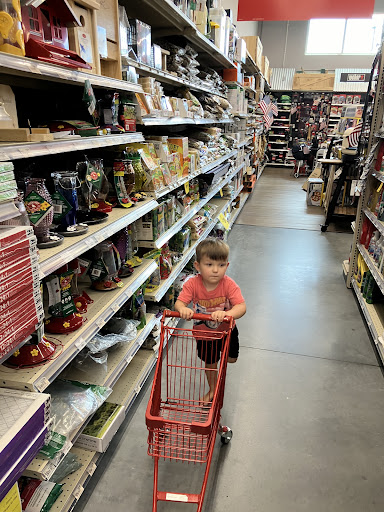Propane exchange near me: The Ultimate 3-Step Guide
Keep the Grill Fired Up Without Missing a Beat
Finding propane exchange near me can save your barbecue plans when you’re running low on fuel. Here’s what you need to know right away:
Quick Answer for Propane Exchange:
- Where: Hardware stores, grocery stores, gas stations, convenience stores
- Cost: $20-$30 for a 20 lb tank exchange
- Process: Drop off empty tank → Pay inside → Pick up full tank
- Time: Under 5 minutes, no waiting for refills
- What You Get: Clean, safety-inspected tank with ~15 lbs of propane
Nothing kills the mood at a backyard cookout quite like running out of propane mid-grill. One minute you’re flipping burgers for the family, the next you’re staring at a cold grill and hungry guests. This scenario plays out thousands of times every grilling season across Charleston and James Island.
Propane tank exchange offers the fastest solution to get you back to grilling. Instead of waiting 10-15 minutes for a refill, you simply swap your empty tank for a full one that’s already been safety-inspected and cleaned. The process takes less than 5 minutes and costs between $20-$30 for a standard 20 lb tank.
The helpful team at Lowcountry Ace has been helping Charleston-area grillers find convenient propane exchange solutions for years, making sure your barbecue plans never have to wait. Whether you’re hosting a weekend cookout on James Island or just need a quick refuel for your patio heater, understanding your propane exchange options keeps you prepared.
Understanding Propane Tank Exchange: The Quick & Easy Way to Refuel
Picture this: you’re hosting the perfect backyard barbecue when suddenly your grill flame dies mid-burger flip. We’ve all been there, staring at an empty propane tank while hungry guests wait. That’s where propane tank exchange becomes your grilling hero.
Propane tank exchange is beautifully simple – you swap your empty tank for a pre-filled, safety-inspected one at a retail location. No waiting around for refills, no scheduling appointments, just grab and go. It’s designed for those moments when you need propane fast and don’t want to hunt down a specialized refill station.
The real magic lies in the convenience factor. While refill stations might have limited hours or require you to wait 10-15 minutes, exchange services are available at everyday spots like hardware stores, grocery stores, and gas stations. This means you can grab a fresh tank while picking up hamburger buns or running weekend errands around James Island.
Safety is another huge advantage that gives us peace of mind. Exchange programs provide tanks that have undergone rigorous safety inspections and maintenance. Many companies use comprehensive refurbishing processes to ensure every cylinder meets safety standards and performs like new. You’re getting a clean, inspected, and ready-to-use tank every single time.
For more detailed guidance, check out our comprehensive guides on How Do You Exchange Propane Tanks and Propane Bottle Swap Near Me.
How the Exchange Process Works
The beauty of finding a propane exchange near me is how incredibly straightforward the process is. Think of it as a simple three-step dance that gets you back to grilling in under five minutes.
Step 1: Drop Off Your Empty Tank. Most locations have outdoor steel cages or designated areas near the store entrance where you’ll place your empty propane tank. These are clearly marked and easy to spot.
Step 2: Pay Inside. Head into the store and tell the cashier you’re doing a propane exchange. You’ll pay just like any other purchase – quick and simple.
Step 3: Pick Up Your Full Tank. The cashier will direct you to grab a pre-filled, inspected tank from the cage. That’s it – you’re ready to fire up the grill again!
The entire process typically takes less than five minutes. There’s no waiting for manual filling, no worrying about tank condition, and no complicated procedures. It’s designed to be as seamless as possible so you can get back to what matters – enjoying time with family and friends.
Exchange vs. Refill: Which is Right for You?
When you need more propane, you’ve got two main options: exchange or refill. Both have their place, and the best choice depends on your priorities and situation.
Exchange shines when convenience and speed matter most. You simply swap empty for full and you’re done. This is especially valuable if your tank is getting old, rusty, or approaching its expiration date (yes, propane tanks do expire!). Exchange programs ensure you always get a safety-inspected tank in good condition, offering excellent peace of mind regarding safety compliance.
Refill typically saves money but requires more effort. When you exchange, you don’t get credit for any leftover propane in your old tank. Plus, exchange tanks contain about 15 lbs of propane (75% of a 20 lb tank’s capacity due to safety regulations), while refills fill your tank to its safe maximum. However, refilling means finding a dedicated station, waiting for service, and ensuring your tank is still within certification dates.
| Feature | Propane Exchange | Propane Refill |
|---|---|---|
| Speed | Under 5 minutes, no waiting | 10-15 minutes wait time |
| Cost | Higher per pound, no credit for leftover gas | Lower cost, pay only for what you need |
| Convenience | Available at many retail locations | Requires dedicated refill stations |
| Tank Maintenance | Always get inspected, certified tank | Must ensure your tank is current |
For more detailed comparisons, explore our guides on Propane Refill Exchange and Propane Bottle Refill.
Understanding typical costs helps you make the best choice. A 20 lb propane exchange near me typically runs between $20-$30, while purchasing a new full tank without exchange can cost $50-$65. This price difference makes exchange the smart choice when you already have an empty tank to swap.
For current pricing in your area, check out our specific guides on Cost Of Propane Exchange James Island and Cheapest Residential Propane Near Me.
Common Tank Sizes for Exchange
The 20 lb tank is the star of the exchange world – it’s the perfect size for gas grills, patio heaters, and most outdoor fire pits. This tank holds just under five gallons of propane and fits the needs of most backyard grilling enthusiasts perfectly.
You’ll also see smaller 1 lb canisters used by campers and outdoor enthusiasts for portable stoves and torches. Some companies offer refillable one-pound bottles as an eco-friendly alternative to disposable ones, though these aren’t as commonly available in exchange programs.
Larger tanks like 30 lb and 100 lb sizes serve different purposes entirely. The 30 lb tanks (holding around seven gallons) work well for RVs and larger outdoor heating, while 100 lb tanks (nearly 25 gallons) power bigger appliances like indoor fireplaces and cooking ranges. These larger sizes are typically refilled at dedicated propane stations rather than exchanged due to their size and specialized handling requirements.
If you’re shopping for a new tank, our Propane Tanks For Sale guide covers your options, and for grill-specific needs, check out Best Place To Buy Propane Tank For Grill.
Are Exchanged Tanks Really Full?
Here’s a question that surprises many people: exchanged tanks aren’t filled to the brim, and that’s actually a good thing! When you pick up your exchanged tank, it follows the crucial 80% fill rule – a federal safety standard that keeps everyone safe.
Propane expands when heated, just like any liquid. If a tank were completely full and then sat in the Charleston sun on a hot summer day, the expanding propane would have nowhere to go. This could create dangerous pressure buildup. The 80% fill rule leaves a critical 20% “vapor space” for safe expansion.
For a standard 20 lb propane tank, this means you get about 15 lbs of propane – which represents 75% of the tank’s nominal capacity. This isn’t short-changing you; it’s the industry standard that ensures safe operation whether you’re grilling burgers or warming up on a cool James Island evening.
Modern tanks include an Overfill Protection Device (OPD) – a safety feature that prevents overfilling during the filling process. You can spot these tanks by their triangular hand wheels. The tare weight (TW) stamped on the tank’s metal collar tells you the empty weight, usually 18-20 lbs for a standard 20 lb tank.
So when your exchanged tank feels lighter than expected, remember – it’s properly and safely filled according to industry standards that prioritize your safety above all else.
Propane Tank Safety 101: Handling, Storage, and Disposal
When you’re dealing with propane tanks, safety should always be your top priority. The good news is that propane is inherently a safe and efficient fuel when handled properly. Think of it like driving a car – it’s perfectly safe when you follow the rules, but it demands respect and proper handling.
Whether you’re picking up a fresh tank from a propane exchange near me or storing one at home, understanding the basics of propane safety will keep your family protected and your grilling trips worry-free. For those who want the complete technical details, you can always refer to the English Safety Data Sheet for propane.
Safe Handling and Storage Tips
Picture this: you’ve just picked up a fresh propane tank from your local exchange location, and you’re ready to get grilling. But before you fire up that grill, let’s make sure you’re handling and storing your propane tank safely.
Transport upright and secure your tank every single time. When you’re driving home with your new tank, it should always be standing upright in your vehicle. A simple milk crate or dedicated tank holder can work wonders to keep it from tipping over during turns or sudden stops. Never lay a propane tank on its side during transport – it’s not just unsafe, it can also damage the valve.
The golden rule of propane storage is simple: store outdoors, always. This isn’t just a suggestion – it’s absolutely critical. Propane tanks should never live indoors, whether that’s in your basement, garage, shed, or even under a covered patio that isn’t well-ventilated. Here’s why: if a leak were to occur, propane gas is heavier than air and will settle in low-lying areas, creating a potentially dangerous situation.
Choose a well-ventilated spot for storage where any potential propane vapors can dissipate harmlessly into the atmosphere. Your ideal storage location should be open to the air, away from direct sunlight, and kept away from heat sources like your grill, electrical appliances, pilot lights, or anything that could generate a spark.
Keep your tank upright at all times during storage. This ensures the safety relief valve operates correctly if pressure builds up inside the tank. It’s also smart to protect your tank from damage by storing it where it won’t be knocked over by vehicles, lawnmowers, or other equipment.
Following these straightforward guidelines ensures your propane tanks are handled and stored safely, giving you peace of mind and keeping your home and family protected.
What to Do with Old, Damaged, or Expired Tanks
Here’s something many people don’t realize: propane tanks don’t last forever. They have expiration dates, can become damaged over time, and sometimes become obsolete due to changing safety standards. Knowing what to do with these tanks is essential for both safety and environmental responsibility.
Tank expiration dates are stamped on the collar of your tank and indicate when it was last inspected. Tanks typically need re-certification every 5, 7, or 10 years, depending on the inspection type. If your tank is past its certification date, most refill stations won’t touch it. This is where exchange programs really shine – they handle all the inspection and recertification hassles for you.
Damaged tanks are a serious safety concern. If your tank shows significant dents, rust, corrosion, or has a faulty valve, it should never be used. Similarly, obsolete valves on older tanks can be a problem. If your tank doesn’t have an Overfill Protection Device (OPD) valve – you can identify these by their triangular hand wheel – it’s considered obsolete and cannot be refilled or exchanged.
So what should you do with these problem tanks? Exchange programs are often your best friend for tanks that are merely old or nearing expiration but otherwise in good condition. You simply swap it out, and the exchange company takes care of all the certification work.
For dedicated disposal of visibly damaged, heavily rusted, or obsolete valve tanks, you’ll need to find a proper disposal service. Never put these tanks in your regular trash or recycling bin. Some propane retailers and recycling centers offer disposal services, sometimes for a small fee or even free when you’re purchasing a new tank.
The helpful team at Lowcountry Ace can guide you on the best local options for safe disposal in the Charleston area. Even an “empty” propane tank may contain residual gas, so proper disposal is crucial. Never attempt to vent remaining gas or dismantle a tank yourself – leave that to the professionals.
Conclusion: Your Easiest Barbecue Season Yet
We know how frustrating it can be when you’re all set for a perfect grilling session, only to find your propane tank is empty. Whether you’re hosting friends on James Island or enjoying a quiet evening cookout on Folly Beach, running out of fuel doesn’t have to derail your plans anymore.
Throughout this guide, we’ve shown you how propane exchange near me services transform what used to be a grilling emergency into a simple five-minute pit stop. The convenience of swapping your empty tank for a full, safety-inspected one means you’re back to flipping burgers before your guests even know there was a problem. No more waiting around for refills or worrying about whether your old tank is still safe to use.
We’ve covered the key benefits that make propane exchange so appealing: the speed of getting in and out quickly, the safety of receiving professionally inspected tanks, and the reliability of knowing your tank meets all current standards. While refilling might save you a few dollars, exchange services give you something even more valuable – peace of mind and time with your family and friends.
Understanding the costs (typically $20-$30 for a 20 lb tank), the proper fill levels (about 15 lbs of propane following the 80% safety rule), and safe handling practices ensures you’re prepared for many successful grilling seasons ahead. Most importantly, knowing how to store and dispose of tanks properly keeps your Charleston-area home safe year-round.
For a hassle-free experience in the Charleston area, the helpful team at Lowcountry Ace offers convenient propane exchange services to get you back to the grill in no time. We’re here to help you keep the flame alive, so your barbecue season is always your easiest yet.
Ready to get back to grilling? Find a propane exchange near me at Lowcountry Ace today!
Lowcountry Ace Hardware: Your one-stop shop for home improvement. We offer quality products from trusted brands and expert advice from our experienced staff. Located on James Island, visit us for tools, hardware, fishing gear, power tools, building materials, grills & smokers, electrical and plumbing supplies, and more.

















